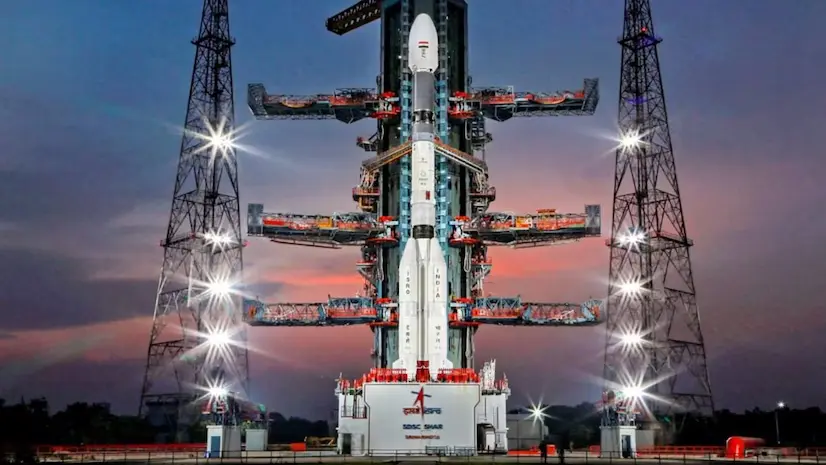The latest achievement in India’s space exploration endeavors comes in the form of the Aditya-L1 mission by ISRO, which has successfully launched India’s first-ever solar space observatory. In this article, we will delve into the details of this remarkable mission, shedding light on its significance and the groundbreaking technologies it employs.
A Bold Step Towards the Sun: The PSLV-C57 Launch
ISRO’s PSLV-C57, marking its 59th flight and 25th mission with an XL configuration, took off majestically from the second launch pad at the Satish Dhawan Space Centre in Sriharikota at precisely 11.50 am. This launch was a significant milestone, as it carried the 1,480.7kg Aditya-L1 spacecraft into a highly eccentric Earth-bound orbit.
What makes this mission even more extraordinary is the duration of the launch, spanning an impressive 63 minutes. During this time, the spacecraft was positioned into an orbit that will initiate a four-month journey. It will achieve this by executing orbital maneuvers, utilizing its Liquid Apogee Motor (LAM), with the ultimate goal of reaching the Sun-Earth Lagrange point L1, situated at a distance of 1.5 million kilometers from Earth. This unique vantage point provides uninterrupted views of the Sun, allowing Aditya-L1 to continuously monitor solar activities and their impact on space weather.
The Complex Maneuvers
Approximately 25 minutes post-launch, the PS4, or the upper stage of the rocket, was fired for a duration of 30 seconds. Subsequently, around 26 minutes later, the PS4 was once again activated, this time for a duration of approximately eight minutes, significantly boosting the rocket’s altitude. After a total of 63 minutes from liftoff, the Aditya-L1 spacecraft was placed in its highly eccentric Earth-bound orbit. This precise execution was celebrated by ISRO Chairman S Somanath, who confirmed that the satellite had been successfully placed in its intended orbit. He also mentioned that this mission marked the first-ever two-burn sequence of the PS4 stage.
The Promise of Uninterrupted Solar Observation
As Aditya-L1 embarks on its 125-day journey to reach the Lagrange point 1 (L1), it promises to revolutionize our understanding of the Sun. Placing a satellite in a halo orbit around L1 offers the unique advantage of continuous solar observation without any occultation or eclipses. This capability will provide invaluable real-time data on solar activities and their effects on space weather.
Celebrating India’s Sunshine Moment
Minister of State for Science and Technology, Jitendra Singh, who witnessed the launch, expressed his excitement and congratulated India and ISRO on this remarkable achievement. He acknowledged that the world had watched with bated breath as India reached for the stars, making it an unforgettable sunshine moment for the nation.
Scientific Objectives of Aditya-L1 Mission
The Aditya-L1 mission boasts an array of scientific objectives that promise to enhance our understanding of the Sun and its intricate mechanisms. These objectives include:
- Studying Coronal Heating: Investigating the mysteries behind coronal heating.
- Solar Wind Acceleration: Understanding the processes driving solar wind acceleration.
- Coronal Mass Ejections (CME): Analyzing the dynamics of coronal mass ejections.
- Solar Atmosphere Dynamics: Gaining insights into the dynamics of the solar atmosphere.
- Temperature Anisotropy: Exploring temperature anisotropy in the solar environment.
Cutting-Edge Scientific Payloads
The Aditya-L1 spacecraft is equipped with seven advanced scientific payloads, all of which have been indigenously developed in collaboration with various ISRO centers and scientific institutes. These cutting-edge instruments include:
- Visible Emission Line Coronagraph (VELC): The primary payload designed to study the solar corona and the dynamics of coronal mass ejections.
- Solar Ultraviolet Imaging Telescope (SUIT): An instrument dedicated to imaging the solar photosphere and chromosphere in near ultraviolet (UV) and measuring solar irradiance variations in near UV.
- Solar Low Energy X-ray Spectrometer (SoLEXS): Designed to study X-ray flares from the Sun across a wide energy range.
- High Energy L1 Orbiting X-ray Spectrometer (HEL1OS): Focused on studying high-energy X-rays emitted by the Sun.
- Aditya Solar Wind Particle EXperiment (ASPEX): Geared towards the study of solar wind and energetic ions, along with their energy distribution.
- Plasma Analyser Package for Aditya (PAPA): An instrument designed for in-depth analysis of solar wind and energetic ions.
- Magnetometer (MAG): Capable of measuring interplanetary magnetic fields at the L1 point.
Conclusion
The Aditya-L1 mission by ISRO marks a significant stride in India’s space exploration journey. With its ambitious objectives and state-of-the-art scientific payloads, it promises to unlock the secrets of the Sun and provide us with valuable insights into our solar system’s most vital star. As we eagerly await the data and discoveries that this mission will yield, it is indeed a momentous occasion for India’s space endeavors and scientific community worldwide.
